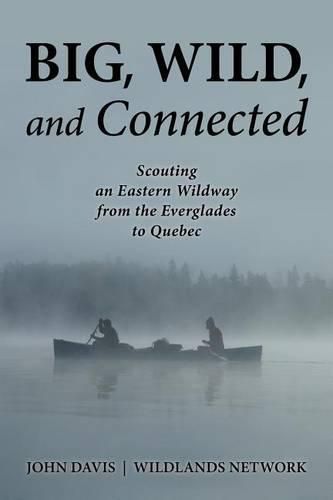Readings Newsletter
Become a Readings Member to make your shopping experience even easier.
Sign in or sign up for free!
You’re not far away from qualifying for FREE standard shipping within Australia
You’ve qualified for FREE standard shipping within Australia
The cart is loading…






In 2011, adventurer and conservationist John Davis walked, cycled, skied, canoed, and kayaked on an epic 10-month, 7,600-mile journey that took him from the keys of Florida to a remote seashore in northeastern Quebec. Davis was motivated by a dream: to see a continent-long corridor conserved for wildlife in the eastern United States, especially for the large carnivores so critical to the health of the land. In Big, Wild, and Connected, we travel the Eastern Wildway with Davis, viscerally experiencing the challenges large carnivores, with their need for vast territories, face in an ongoing search for food, water, shelter, and mates. On his self-propelled journey, Davis explores the wetlands, forests, and peaks that are the last strongholds for wildlife in the East. This includes strategically important segments of disturbed landscapes, from longleaf pine savanna in the Florida Panhandle to road-latticed woods of Pennsylvania. Despite the challenges, Davis argues that creation of an Eastern Wildway is within our reach and would serve as a powerful symbol of our natural and cultural heritage.
$9.00 standard shipping within Australia
FREE standard shipping within Australia for orders over $100.00
Express & International shipping calculated at checkout
In 2011, adventurer and conservationist John Davis walked, cycled, skied, canoed, and kayaked on an epic 10-month, 7,600-mile journey that took him from the keys of Florida to a remote seashore in northeastern Quebec. Davis was motivated by a dream: to see a continent-long corridor conserved for wildlife in the eastern United States, especially for the large carnivores so critical to the health of the land. In Big, Wild, and Connected, we travel the Eastern Wildway with Davis, viscerally experiencing the challenges large carnivores, with their need for vast territories, face in an ongoing search for food, water, shelter, and mates. On his self-propelled journey, Davis explores the wetlands, forests, and peaks that are the last strongholds for wildlife in the East. This includes strategically important segments of disturbed landscapes, from longleaf pine savanna in the Florida Panhandle to road-latticed woods of Pennsylvania. Despite the challenges, Davis argues that creation of an Eastern Wildway is within our reach and would serve as a powerful symbol of our natural and cultural heritage.